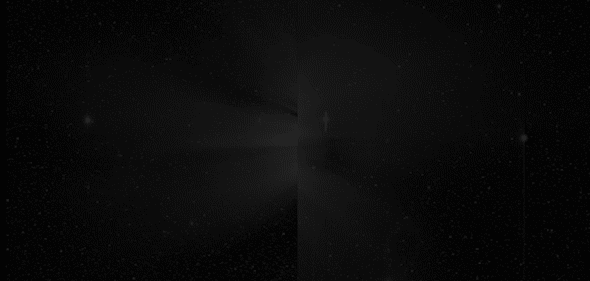WP8 - Project Dissemination
Introduction:
The aim of WP8 is to set up the processes/facilities to disseminate HELCATS results and products.
The work package consists of five tasks.
- Publication of results and conclusions
- Annual open meetings with the science community and presentations at major science meetings
- Installation of relevant documents, catalogues, publications on the project website
- Integrate with relevant, established community facilities and websites
- Dissemination of information to the public and policy makers
Methodology:
This activity is aimed at ensuring the project outputs are promoted as widely as possible within and outside the project. This involves advertising of outputs and engaging with the community to maximise the capability and usability of the results. To help provide credability and sustainability for the activities results of the studies will be published in the professional literature and presented at international science meetings. Engagement with the community will include holding annual open meetings during the lifetime of the project. The HELCATS website will provide a central portal to all the activities, outputs and information and will be updated frequently. The use of social media channels will be used to help inform of changes, release and other new sevents. A key feature of HELCATS dissemination activities is the intergration of the results into established community facilities. This not only ensures sustainability for the outputs beyond the lifetime of the project, but also leverages the value added capabilities offered by services such as AMDA to data mine the results in conjunction with outputs from other projects.
Task 1: Publication of results and conclusions
The cataloguing, comparison and assessment activities will all deliver reports to the project and the FP7 programme. These deliverables (from WP2-7) are the topics for open publication (see above). Here we focus on the preparation, submission and publication of results to the open research community through the professional literature. Most publications would be submitted as the project concludes. This work will involve most groups, coordinated through the lead participant, STFC.
Task 2: Annual open meetings with the science community and presentations at major science meetings
We propose holding one meeting per year that is open to the wider science community (in association with every other biannual project meeting). We anticipate one in the UK, France and Germany to maximise potential community involvement across Europe. The meetings will focus on dissemination of results and their exploitation in future research. Funds to attract key speakers (paying limited travel costs) are included. We anticipate a workshop-style forum (coordinated by STFC) akin to CDAW meetings (http://spdf.gsfc.nasa.gov/cdaw.html) involving 30 to 50 attendees. Team members would present results at major meetings (e.g European Geosciences Union (EGU) in Vienna, and American Geophysics Union (AGU) in San Francisco in fall and another US city in spring) to provide the most comprehensive platform for advertising the project outcomes. Depending on what is presented, costs come into WP8 (administered by STFC) or individual WPs.
Task 3: Installation of relevant documents, catalogues, publications on the project website
The project website is the principal repository for all information, for the project team and the open user community. This task ensures that all information is available to both. STFC (responsible for the website; WP1) will oversee posting of information by all participants.
Task 4: Integrate with relevant, established community facilities and websites
As a logical extension of Task 3, we will: 1. Standardise the delivery format of CME and CIR kinematic catalogues across WPs such that programming languages like IDL, MATLAB, C++ and FORTRAN, but also virtual observatories, can ingest them easily within their computational framework. 2. Ingest these standardised catalogues into the UK Solar System Data Centre (UKSSDC; RAL). 3. Put in place web-services from the source archive, UKSSDC, to other data centers such as CDPP/IRAP (France), the European virtual observatories e.g. HELIO (Heliophysics Integrated Observatory; FP7 project), and the American Virtual Solar Observatory (VSO). By doing so, the planetary community that uses the FP7 EUROPLANET platform will immediately gain access. 4. Create a web-service between UKSSDC and the IRAP propagation tool. This CNRS-financed tool (will be fully operational in March 2013) will provide web-based access and manipulation of HI J-maps, including access to pre-generated timeelongation profiles for specific CMEs/CIRs or permitting users to extract profiles by clicking on J-maps. This tool will provide access to the CME/CIR catalogues (from WP3 and WP5) and will offer an additional platform to help scientists access and manipulate catalogues developed in this project. The propagation tool will link plasma data centers like the CDPP to solar archives like UKSSDC. 5. Create a web-service to send the catalogues of solar features and in-situ features associated with the HI/CMEs and CIRs, determined as part of WP3 and WP5, to the above listed virtual observatories, the propagation tool and the web-based data mining tool AMDA. 6. Store the most accurate Carrington maps of solar wind speed at UKSSDC and integrate these maps in the IRAP propagation tool. Upon completion of the IRAP propagation tool, the interface will offer direct visualization of Carrington maps; integrating the Carrington maps calibrated in this proposal will be straightforward.
Task 5: Dissemination of information to the public and policy makers
This WP includes interaction with the public (see Annex 1B) and policy makers. The website will include public/media targeted information, and press releases will be produced when appropriate (e.g. project initiation, key milestones and results). Basic information for the non-scientist will be available (e.g. background, aims, galleries, links). The activities will include media interviews and public talks/presentations, in which most team members have extensive experience. Recognizing that this is a topic of interest to the public, we will maximize the outreach activities of the project. On the issue of policy makers, we recognize the project’s value to space weather and will maintain contact with key strategic European bodies, such as the ESA Space Situational Awareness programme and national bodies. This deliberate strategy will include targeting agenda items, inviting key speakers to meetings, and providing copies of our reports to these organizations.
Deliverables:
| Deliverable Number | Deliverable Title | Leader | Delivery Month |
|---|---|---|---|
| D8.1 | Publication in the professional scientific literature | STFC | 36 |
| D8.2 | Annual open meetings | STFC | 36 |
| D8.3 | Attendance/presentations at major science meetings | STFC | 36 |
| D8.4 | Posting information on the website | STFC | 36 |
| D8.5 | Integration with community facilities and websites | STFC | 36 |
| D8.6 | Production of press releases, public talks | STFC | 36 |
| D8.7 | Integrate the J-map associated catalogues produced in HELCATS to the propagation tool | UPS | 36 |
| D8.8 | Integrate Carrington Map associated catalogues in the propagation tool | UPS | 36 |
Other Outputs:
Description of work package.
Schedule:
Description of work package.
Current Status:
Description of work package.





